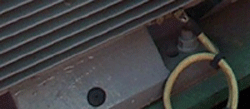Safety is a vital requirement of plant operations within todays process industries. Ensuring that equipment is safe to operate within hazardous areas where a potential explosive risk exists is one contributor to a safe working environment and the subject of this article.
European legislation in the form of ATEX regulations requires that each item of electrical equipment installed in such a hazardous area is regularly inspected and maintained to ensure that the equipment is safe to operate, and continues to be safe to operate, and that accurate records are maintained to demonstrate compliance to these regulations. In the UK, the Health and Safety Executive (HSE) are responsible for ensuring that plant operators comply with these regulations.
With the recent updates to the ATEX 95 regulations, some dust atmospheres and mechanical equipment are now included within the scope of these regulations.
Daunting task for maintenance managers
For a plant maintenance manager, the task of regularly inspecting and verifying all installed ATEX-regulated equipment, often exceeding 20,000 items on medium to large process plants, can be a daunting prospect. Considering that the equipment register may not accurately reflect the installed equipment due to 1) equipment replacement or upgrades, 2) area classification upgrades/downgrades, 3) changes in regulations that have the effect of increasing the scope of equipment covered by the regulations, and 4) human error recording equipment tag details, further increases the complexity of this task.
On older plants and in severe environments the identification of each item of ATEX-regulated equipment can be very difficult to achieve and may not meet the ATEX requirements. For example, equipment on some older plants may not be individually identified as a result of the equipment tag being unreadable or missing, making the process of recording inspection results to demonstrate ATEX compliance difficult. Similarly, although electrical cabinets may be individually identified, the individual items of equipment contained within each cabinet may not.
For those with deep pockets, the age-old solution to these problems has been a complete baseline survey to deliver an up-to-date register of the installed ATEX-regulated equipment. However, the quality of these baseline surveys largely depends on the contractor tasked to perform the survey. A quality survey should deliver:
A complete equipment register containing the equipment tag, equipment details (for example, manufacturer), and ATEX specific details (for example, ATEX certification number)
Identification of equipment previously not included in the equipment register, ensuring that new tags are attached to equipment found without a tag
Identification and criticality of all equipment defects found.
If an existing maintenance management software system holds the equipment register, this can be updated to reflect the true installed equipment. Once an accurate equipment register is available, an inspection strategy can be defined. Most inspection strategies assume all equipment is equal, taking no account of the condition of the equipment and the level of risk of the area where the equipment is installed. As a result, many on-going inspection processes are less effective and more costly in terms of deferred production, time and money than they could be.
On approval of the inspection strategy, the ongoing programme of inspection and recording the results can begin. Having these accurate results readily accessible is a vital part of this process, and can help to reduce the stress associated with an HSE inspection. Today, many inspection processes rely on paper-based data gathering methods, using paper forms to record the inspection results. Although inspection teams may be comfortable with these methods, several pitfalls exist:
Untimely visibility: Some time after the inspection date, not untypically 1-4 weeks, these results become visible to the team responsible for managing the inspections. As a consequence, the team may be unable to demonstrate compliance to the HSE inspector, or may be unaware of critical defects found, or may be unaware of progress slippage
Unable to find inspection results: paper-based forms are easily mislaid and can be difficult to find when requested by the HSE inspector
Condition/risk-based inspections are difficult to manage: inspection strategies that vary depending on the equipment condition or the level of risk attributed to the plant area are difficult to manage effectively with paper-based methods.
A cost-effective quality approach To ease the pain of implementing a condition-based inspection strategy that complies with current inspection standards (EN60079-17), help is at hand for plant maintenance managers in the form of software tools, such as InspectEX from Arnlea Systems. These tools use ATEX-certified hand held computers to deliver information direct to the technician performing the inspection, replacing paper forms. Where accurate identification is a recurring problem, some tools also support electronic RFID tags that are permanently attached to the equipment. By simply scanning the RFID tag the correct equipment information is displayed on the hand held computer screen.
To ease the pain of implementing a condition-based inspection strategy that complies with current inspection standards (EN60079-17), help is at hand for plant maintenance managers in the form of software tools, such as InspectEX from Arnlea Systems. These tools use ATEX-certified hand held computers to deliver information direct to the technician performing the inspection, replacing paper forms. Where accurate identification is a recurring problem, some tools also support electronic RFID tags that are permanently attached to the equipment. By simply scanning the RFID tag the correct equipment information is displayed on the hand held computer screen.
Another advantage of these RFID tags is their capability to hold the recent inspection history, allowing an HSE inspector immediate access to the current inspection details for the specific item of equipment, by simply scanning the RFID tag attached to the equipment. This capability can eliminate the need to check the database records and ensures the inspection history stays with the equipment as it moves around, such is the case with long-term rental equipment.

Photograph shows RFID
tag (black, circular device
bottom of photograph) on
an electric motor.
By linking directly to the system holding the equipment register, these tools show currently known details of the equipment under inspection to the technician, allowing fast verification and updates where necessary. Defect reporting follows the verification process, to ensure all defects are recorded for analysis later. Unlike paper systems, data entered by the technician is immediately verified to eliminate data entry errors.
Some tools go far beyond a simple data gathering extension to the existing maintenance management system by providing features to 1) define the criticality of each area on the plant as a result of the process, environment, or other factors, 2) define the inspection strategy for each area depending on its criticality and the current known equipment condition, 3) manage this risk-based inspection strategy, informing technicians of the inspection type to be performed and providing a full electronic audit trail of all strategy changes and inspection results, and 4) deliver powerful reporting capabilities to deliver instant access to the information required to support decisions.
For the maintenance manager, several benefits are delivered:
Equipment register accuracy
Early visibility of inspection progress and problems found, reducing the cost of taking action
Knowledge that inspections comply with the strategy, with any exceptions automatically highlighted
Instant access to inspection results, either at the database or on the equipment
Easy analysis of inspection results, highlighting problem areas or equipment types
As a concluding remark, these software tools deliver a new approach to maintaining the plant as a safe working environment but in a cost-effective manner. In one recent example, InspectEX reduced the inspection programme duration for 22000 items of equipment by over 20 per cent.
Kevin Boyd is Operations Manager with Arnlea Systems Limited, a software and wireless solutions company delivering productivity tools for equipment integrity-related tasks to improve the quality of decision-support information whilst reducing task cost/time.

Add a Comment
No messages on this article yet